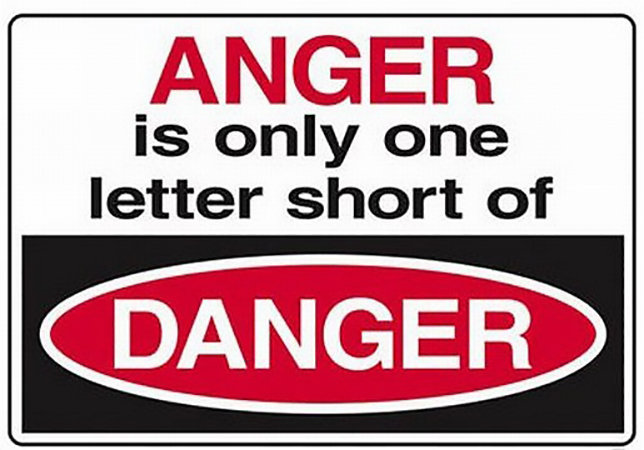What follows is a short chapter from the Mental Game Handbook – hopefully enlightening – on how the wrong thinking can, even with the best of intentions – negatively affect our performance in the shooting box that looks like this: OXXOOX. In short, it’s about what we can control – what we can’t – and which one of those holds our attention.
When the pressure is on, we can “engage” the distractions (move our attention to the distraction), or we can “accept” them and “dis-engage,” keeping our attention on the target in front of us.
Here’s an example of engaging what we can’t control.
August, it’s 103 degrees. 7 AM, I’m at the club preparing for my 3 lessons and it’s now 6 PM. I’m cooked and exhausted. 5 minutes from home, Cheryl calls. “Honey…please pick up some milk.” OK. I circle the no-vacancy parking lot looking for a space – any space, anywhere – which I eventually find, two hundred yards from the storefront. Did I mention the heat?
You’d think the milk would be in the front of the store. Oh no. It’s way in the back of the Mega Giant Super Store. Customers hire Guides to find it. I lucked out. A gallon of milk in hand, I start the trek back to the distant cashier, who I discover I can’t see. That’s how long the line is. I can’t see any customers ahead of me either, all behind their six-foot-high loaded carts. This is the shortest line BTW.
Willing the line to move faster, I notice my left arm growing longer so I shift the milk to my right hand, hoping it won’t go out of date before I can leave the store. At last, and only 25 minutes later, I’m next in line. The elderly lady in front of me is buying 1 Pepsi and 1 small bag of pretzels. That would be 2 items. Exactly 2. Now she’s opening her purse. Now? No, it’s not for change – it’s for – are you ready? – her checkbook. OK. The check is written and handed to the cashier who disappears! What? So, we wait. Here she comes, holding it over her head triumphantly, the check for $1.84 has been approved.
Finally, at last, I’m up. Nope. Do not step forward. Mildred and the cashier know each other. Out comes the picture of her Grandson, 4-month-old bald Nathan. Isn’t he cute? I breathe slowly. Shifting my hold on the milk, it’s a wonder Mildred hasn’t noticed my thoughts? Probably a good thing.
Notice the engaging going on here? Here’s the question. With no one in line behind me, is there 1 single person in this store – anywhere – who is thinking or feeling what I have for the last 25 minutes? No, there isn’t. The store, the line, the wait, Mildred and the cashier, the frustration is all on me. At least it used to be. Until I learned to accept. Now when I get behind a Mildred and feel the tension – hear the self-talk – I chuckle. Sometimes out loud. Maybe that’s why people behind me move to another line?
Learning to accept and not engage is a skill that’s learned on the highway in rush hour traffic; in the office at the deadline when the fax machine stops working; at the back of the traffic line when the light turns green and no one moves; and at home when patience and forgiveness are in short supply.
The key is separating what we can and cannot control. What we cannot control – we accept – so it doesn’t control us. This, folks, adds X’s to our score card – or not – depending on whether we accept or engage what we can’t control.
Here’s another example of engaging I witnessed.
It’s the State Trap Championship and BJ unexpectedly finds himself tied with the Big Dawg shooter. Shoot-off for HOA underway, Big Dawg is on the left, shooting first. The shooting cadence begins, BJ lifting and closing his gun after each shot on his left. Again, they are tied with 24 each. Head down, BJ waits for the last shot on his left. And waits. Silence. Nothing. BJ turns and looks left. Big Dawg lowers his gun, opens it, removes the shell and examines it very carefully. Time passes until Big Dawg is satisfied that all is well with the shell. The gun closes, he mounts and fires. BJ watches the X.
Turning back around, BJ lifts his gun and fires. O. Lost target. He turns to look at Big Dawg, who say’s “Sorry BJ” and walks away, knowing his intentional distraction worked to perfection. BJ engaged, his attention at the trigger pull divided between the distraction and his last shot. Attention on his last target? 50%. At best.
Here’s some engaging maybe you can relate to?
Nearing the end of his round, our shooter is scoring particularly well. As a matter of fact, it’s the best he’s ever shot in a tournament. 4 Stations to go, telltale signs of apprehension and caution are noticeably creeping into his swing. Predictably, right on schedule, the missing starts.
Why? Because he’s thinking about “not missing” and finishing with his highest possible score. He’s trying to control “later.” He can’t. He can only control now and by now I mean this shell, this target, this one swing. One shell. One target. One swing. Single, RP or TP, we can only control now. Putting all his attention on his final score…XOOXXX. Or, by accepting, he can put ALL his attention on the ONE target directly in front of him…XXXXXX.

Engaging self-talk has been the ruin of many a good score, a losing battle with the mental storm of “outcome thinking.” Engaging a miss, losing our composure, will cost us even more targets. And here we are later, at the Master Score Board looking at a score below our expectations.

Acceptance skills are our EZ Pass onto the beltway around the distractions so we don’t engage the frustrating self-doubting, annoyances, anger, disappointment and all the futile “wishful thinking.” This keeps our attention on the shot in front of us, what we can control – XXXXXX. The good new is: we have a choice. Choose acceptance. It’s all good folks.
Be safe and I hope to see you out on the course.
Sign up for the Paragon Newsletter Click Here
Please share the link with your fellow shooters. Thank you!
XXXX
About Dan Schindler
Dan Schindler is one of only 60 worldwide members of the Guild of Shooting Instructors (UK) and is one of the most highly respected Sporting Clays and Wingshooting Instructors in the US. Dan is an NSCA Level III Instructor (since 1995) and founded the Paragon School of Sporting with one goal in mind. Whether it be for the advanced competitor or providing the basics to the entry-level shooter, Paragon provides the simplest, most practical and most effective Instruction, Coaching and Mental Training for the Sporting Clays & Wingshooting enthusiast. Dan Schindler helps shooters alleviate a lot of their frustration by taking the mystery out of breaking targets, calling their own misses, and make their own corrections. Lessons are fun, enlightening and our clients learn to shoot better in minutes!
Dan Schindler's Books
"Recommended for shooters of all skill levels, Coaches, Instructors
and parents of youth shooters."
Take Your Best Shot (Book I), 3rd Edition is THE Gold Standard Primer It's all about the fundamentals, a requirement for good shooting. This book is used by high school and college shooting teams, recreational and competitive shooters from around the world. Solid, valuable, concise information that has helped thousands of shooters shoot more consistently with higher scores.
To The Target (Book II) Builds on the steps outlined in Book I. Emphasises Gun Management skills when the trap fires, creating a consistent, reliable, trustworthy swing.
Beyond the Target (Book III) is for shooters of all levels, filled with valuable information, clay target truths. Entertaining and a culmination of 3 decades of Dan's life's work as a teacher, competitor, published writer, and much more.


0 Comments